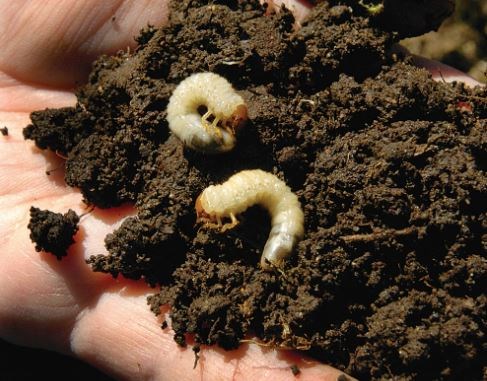Billions upon billions of microscopic worms are being unleashed upon Vancouver playing surfaces this week in the hopes that they can level the insect playing field.
The Vancouver Park Board announced plans Thursday to begin nematode treatments on 31 playing fields in the city, some of which are damaged to the point of being closed entirely for the season.
The nematodes are being used to combat the widespread appearance of the European chafer beetle, a type of invasive species first seen in New Westminster in 2001.
The city is spending $15,000 on purchasing the insects, though it’s not expected they’ll fix the problem entirely. Two weeks ago, the city banned a type of pesticide meant to kill chafer beetles that was found to be toxic to other insects and wildlife.
“It is important to remember that nematodes are not going to eradicate the problem, they’re going to help us control it,” said Brian Quinn, the Vancouver Park Board’s manager of park operations. “We haven’t even talked about what our expectations are as far as success. We’ll have to evaluate that in the winter or early next spring.”
Adult chafer beetles typically lay their eggs in June, which then hatch in July. The grubs then feed on the roots of grasses and are easy prey for birds, skunks and other predators that further exacerbate the damage done to lawns, medians, boulevards, parks and playing fields.
Now is the time to act, given where those young beetles are at in their life cycles.
“Where we’re really going to see the difference is next spring,” Quinn said. “Hopefully the work we’re doing now gets at the chafer beetle larvae while they’re small eggs.”
Quinn said the chafer beetle only became a serious problem in Vancouver within the last two to three years, largely due to the warm, dry summers and watering restrictions that were in effect.
“The Vancouver Park Board made a conscious decision last year to reduce the amount of water we were putting on our playing fields to kind of set an example to others about what Stage 3 watering restrictions mean,” he said. “But now we are seeing in hindsight, it probably wasn’t our best tactic from an asset maintenance perspective.”
About two billion nematodes are applied to the average playing field, which is about 6,000 square metres in size. Quinn said the key to mitigating the problem is by maintaining a healthy lawn: not too much water, but enough so that it’s moist enough for the nematodes to burrow in to the ground.
A news release from the city notes lawns must be kept moist before and after applying the nematodes: watering must be maintained for two to three weeks after application for ideal results.
Homeowners need to apply for a watering exemption permit if applying nematodes and can do so by calling the city’s information line at 3-1-1.
@JohnKurucz



